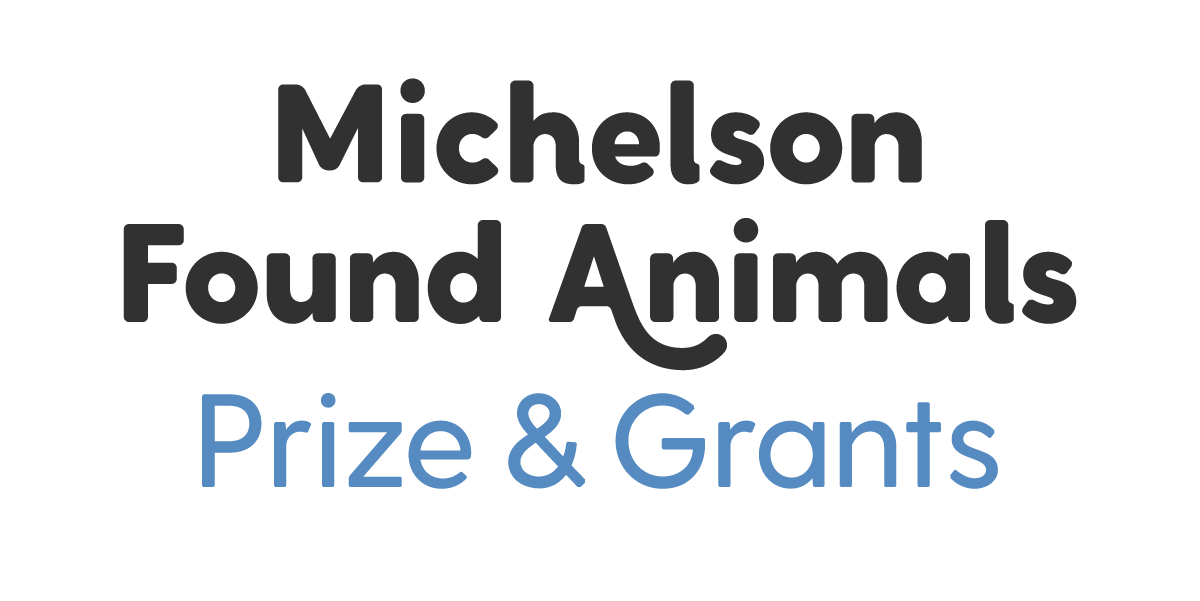
About ACC&D
Our History

Convener, Collaborator, Catalyst
Since 2000, ACC&D has served as a unique bridge between the animal welfare, scientific, veterinary, and pharmaceutical communities. We strive to bring all parties together with a shared goal: to better companion animal health and welfare by expanding options for controlling feline and canine reproduction. ACC&D seeks to be a catalyst for action in the field of non-surgical sterilization, always basing our work on sound science.
The Early Years
Our organization is the brainchild of three individuals: Dr. Henry Baker, a Professor of Microbiology at the Virginia-Maryland Regional College of Veterinary Medicine, and Drs. Stephen Boyle and Brenda Griffin, both veterinarians at Auburn University’s College of Veterinary Medicine.
Esther Mechler, a longtime advocate for spay/neuter and founder of SPAY/USA, is responsible for introducing the three scientists when she arranged a panel on non-surgical sterilization at the 2000 Spay USA Conference. Drs. Baker and Griffin spoke on the panel and learned that Dr. Boyle had the same vision for new technologies to improve animal welfare.
Dr. Boyle then convened a meeting at Virginia Tech in August 2000, which drew 12 experts interested in improving contraceptive technology for cats and dogs. Up to this point, researchers and veterinarians interested in the cause had largely been working independently, and meeting participants felt strongly that non-surgical fertility control needed greater support and collaboration than was currently being used. The pivotal meeting was funded by Gerald R. Dodge Foundation, the Humane Society of the United States (HSUS), and Virginia Tech. The Alliance for Contraception in Cats & Dogs grew out of this meeting, motivated by a unique mix of scientific acumen and dedication to animal welfare.
Around this time, then-Executive Director of PetSmart Charities Joyce Briggs was receiving grant applications from a handful of scientists dreaming of a spay shot, and she attended this same Spay USA conference. She was intrigued, and when she later included questions about non-surgical fertility control in an adopter survey, she learned there was strong pet owner interest in the concept, as well.
An early member of Animal Grantmakers, founded the prior year, Briggs found funder colleagues similarly excited and also feeling ill-equipped to evaluate the science being proposed. With their support, Briggs spearheaded a December 2000 funders review panel hosted by PetSmart Charities, which drew roughly a dozen researchers (including Baker, Boyle and Griffin) and an equal number of funders, supported by eight advisors with scientific, business, and legal expertise.
The connections and assessment of research approaches in this meeting influenced funding decisions from many grantmakers over the next several years.
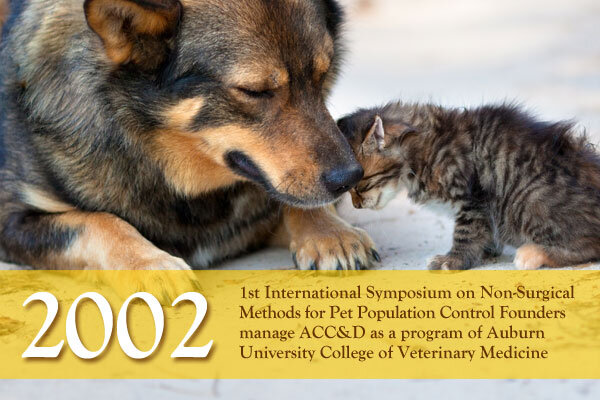
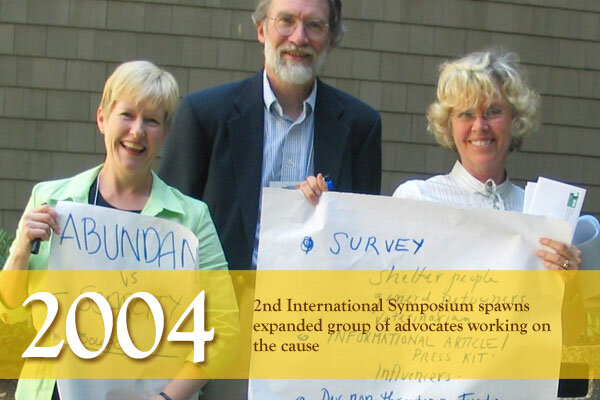
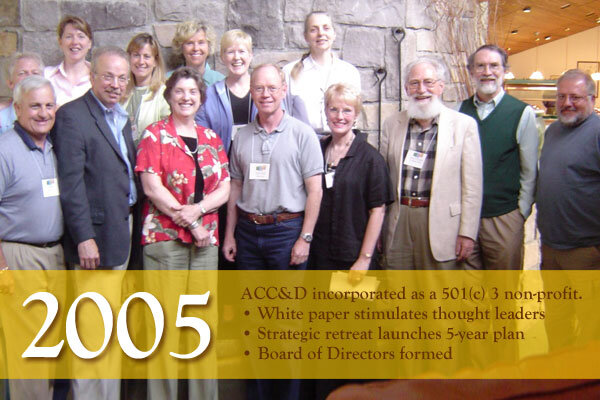

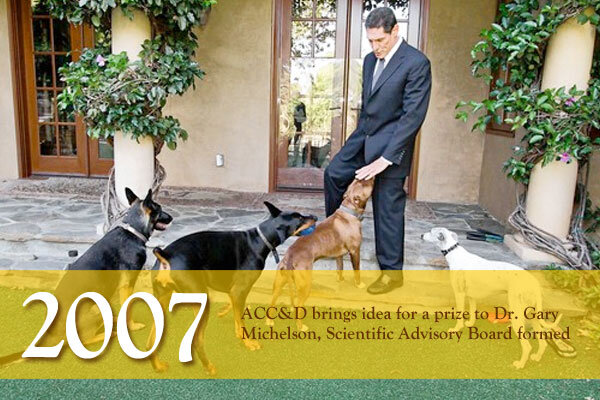
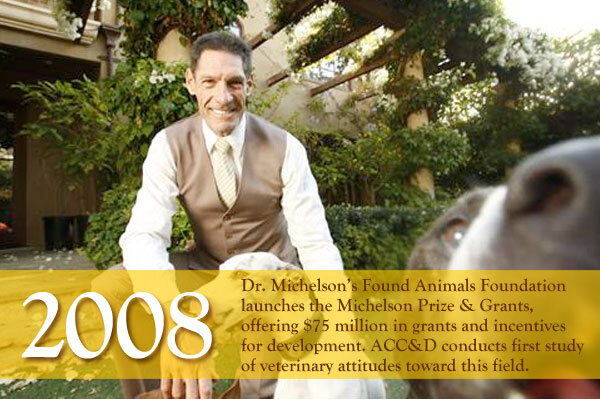
Growing the organization and truly becoming an “alliance”
ACC&D held a second symposium in 2004 which sparked interest in growing ACC&D, and a 2005 white paper authored by Linda Rhodes, VMD/PhD, and Katherine Moldave, MBA, asked provocative questions about how the initiative might be structured and advanced, with examples from human health as inspiration. In a 2005 strategic retreat, 14 leaders gathered to design a pathway forward.
A core group from the retreat volunteered to translate the retreat ideas into an action plan. Dr. Boyle, Joyce Briggs (former ACC&D President), then-Animal Assistance Foundation Executive Director David Gies, Veterinarian Don Polley, and former ASPCA Executive Vice President Steve Zawistowski together pursued independent 501(c)3 nonprofit status for the organization and, in 2006, created ACC&D’s first five-year plan. Among the goals: to raise $10 million for the advancement of promising technologies.
ACC&D’s expanding Board of Directors continued to convene leaders from stakeholder groups needed to advance this mission. National animal welfare leaders, scientists, veterinarians, and leaders from animal health and foundations found common ground in ACC&D’s mission and vision. In 2007, ACC&D's Scientific Advisory Board was created, and in 2020, a separate International Advisory Board was launched.
Essential Financial Support
Beginning in 2006, the ASPCA has provided generous annual grants to ACC&D, as well as offering Board leadership and strategic support. The HSUS has also offered significant annual support both financially and through Board participation from 2006 to the current day. We are also grateful to the dozens of organizations and many individuals who have supported this work. Our leadership funding since 2011 has come from our Council of Stakeholders.
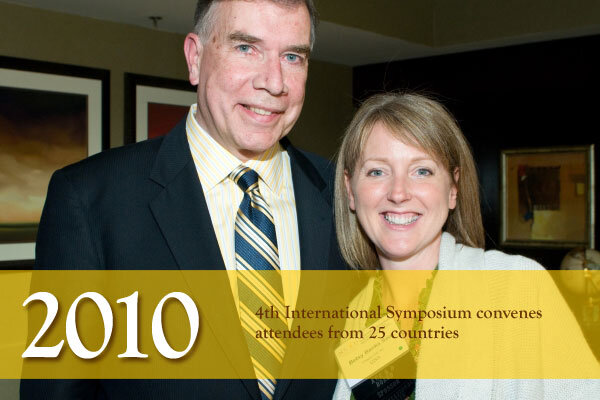
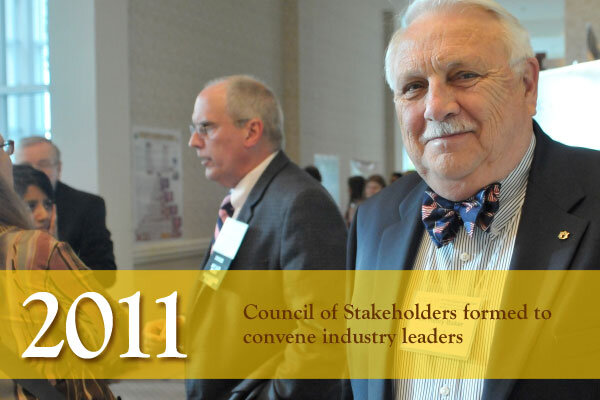
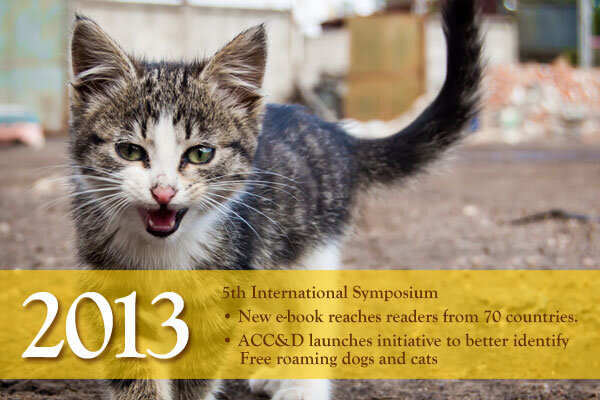
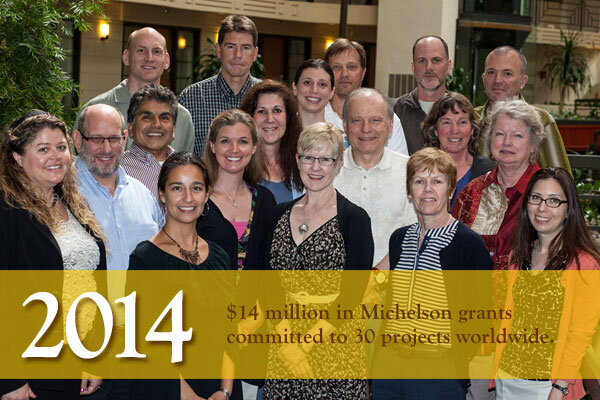
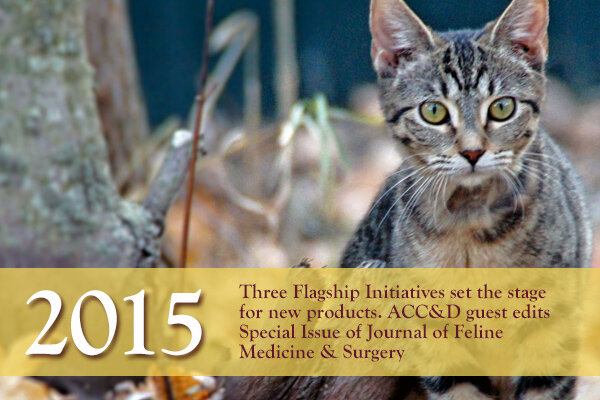
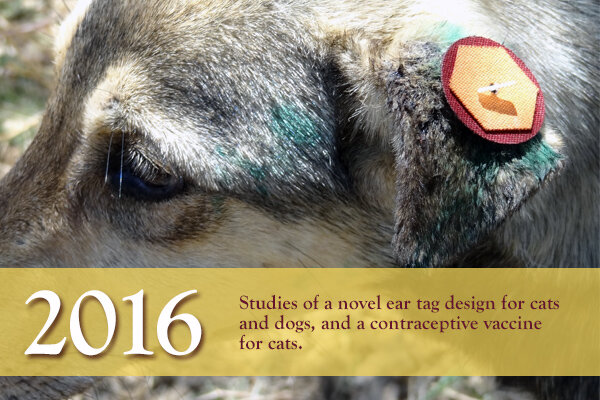
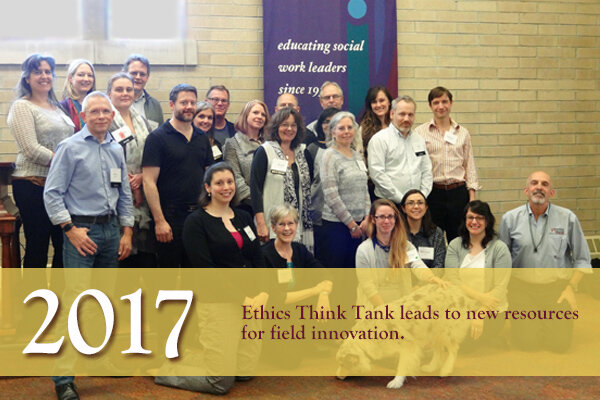
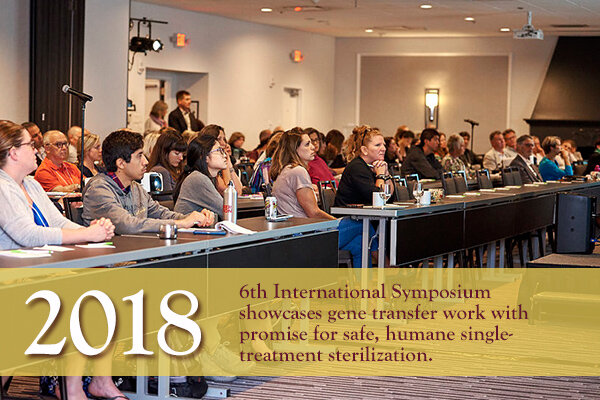
Michelson Prize & Grants
Soon after incorporating, ACC&D played a key role as the catalyst to inspire the Michelson Prize & Grants Program (MPG). Launched in 2008, the MPG Program incentivizes research through a $25 million prize and $50 million in grant funding to develop a single-dose, non-surgical sterilant for male and female cats and dogs. The Found Animals Foundation’s commitment to fund and operate the MPG Program was a huge step for the field of non-surgical animal sterilization. It has both energized many talented scientists and funded many research endeavors aimed at developing and refining the science necessary to create new tools.
Click here to see a presentation from ACC&D’s 6th International Symposium on the past, present and future of MPG research, or visit their website for more about the research they’ve funded.
Programmatic initiatives and innovation
ACC&D continues its role as convener, advocate, and educator for non-surgical sterilization for cats and dogs. We have held six international symposia to facilitate circulation of resources and information in the field. We have coordinated Think Tanks to jumpstart discussion of pertinent issues, published a comprehensive e-book that has been downloaded in over 70 countries, and worked to inspire creative and effective uses of a permanent non-surgical sterilant for male dogs.
ACC&D's key projects help to advance our mission and this field. In some instances, these projects have evolved from ACC&D Think Tanks concluding with such energy and tangible ideas to enhance animal health and welfare that we simply couldn’t pass up the opportunity to take them to the next level. You can read more about these projects here.
Just one example: ACC&D has conducted clinical trials on a promising three-year contraceptive for female cats that was not being taken up by any sponsors. Sadly, it did not deliver the efficacy we expected, but did generate much learning about innovating to do research with cats effectively and humanely, and on ethical decision making; both generating resources for the animal welfare and veterinary fields.
Our current project to create a visual ID to use for dogs and cats whose sterilization will be done without anesthesia and bodily scars, is also evolving into a broader innovation, an improved option for abdominal tattoos currently done for surgical sterilization.
ACC&Ds many related projects can help both advance this field and the broader field of cat and dog welfare. Check out our Projects, and our Product Profile and Position Papers on available products.
The Future
We recognize that we will need to persevere to see this field reach its potential. Drug development is slow work. Yet there are many ways to work toward making good use of the tools we have and preparing the marketplace for those tools to come. We are committed to progress in developing effective dog and cat contraceptive technology. In addition, we see our role as helping these new tools fit into holistic programs to improve the well-being of cats, dogs, and communities alike. We hope you’ll explore the many future-focused sections of our website for our current strategies, activities and goals.


